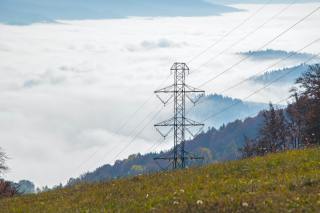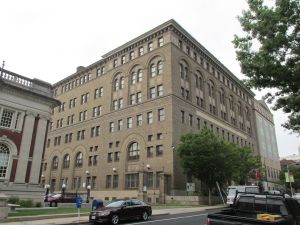
Connecticut’s utilities commission is the latest to begin offering payments to help environmental justice and ratepayer groups participate in regulatory proceedings.
The Stakeholder Group Compensation Program was required to take effect this month as part of an energy consumer protection bill passed by the state legislature last year. It seeks to encourage more diverse engagement in proceedings on utility regulation, which can set direction for grid resiliency, rate relief, clean energy development, corporate accountability, storm response and more.
In a Jan. 3 decision and new online guidance, the state’s Public Utilities Regulatory Authority (PURA) says each eligible stakeholder group can apply for up to $100,000 at a time. Each docket is limited to $300,000 in funding across all groups, with $1.2 million total available per year.
The program covers groups and nonprofits representing at least one of a few types of utility customers: a person living in a designated environmental justice community; a “hardship” case, defined as someone seeking to reinstate shut-off electric or gas service in winter who cannot pay their bill; or a small business.
“The process of engaging with proceedings at public utility commissions across the nation is historically exclusive,” wrote Jayson Velazquez, the climate and energy justice policy associate with the nonprofit Acadia Center, in comments on the PURA docket creating the new program. “Compensation can play a significant role in ensuring diverse stakeholders are included in proceedings, specifically at PURA.”
Groups that might use the program say this approach, which has also been contemplated at the federal level, is an important step forward — and they argue that more can be done to encourage inclusive engagement in regulators’ work on climate and economic justice issues.
Mark LeBel, a senior associate with the Regulatory Assistance Project, a nonprofit energy consulting firm, said the concept of intervenor compensation dates back decades and goes hand-in-hand with other consumer protection initiatives, like citizen utility boards and stronger ratepayer advocate offices.
The idea is regaining steam amid a trend toward more attention on equity and the overall mechanics of utility regulation, LeBel said.
“Each state spends implicitly millions of dollars to support utility regulatory participation,” he said. “It’s a perfectly reasonable idea to apply a version of that to other parties, including those in need.”
Six states have similar, active programs: Idaho, Michigan, Minnesota, Oregon, Wisconsin and California, the largest such program in the country with $10 to $15 million in payouts per year, according to a 2021 report from the National Association of Regulatory Utility Commissioners. A handful of other states have authorized such a program but don’t use it in practice, the report said.
Perfecting the scope of these programs can be tricky, LeBel said. In designing rules and setting funding levels, legislators and regulators may choose either to target money narrowly to the groups that need it most — or to cast a wider net to a range of stakeholders.
Lillian Brough, associate director of the Connecticut-based energy nonprofit Efficiency For All, noted this trade-off as she reviewed the new PURA program’s details.
Brough said her organization’s executive director Leticia Colon de Mejias, a longtime Connecticut environmental justice advocate, has participated in several PURA proceedings over the years, but they don’t have designated staff or resources for this complex work and can’t currently prioritize it as a result.
This means the new compensation program could greatly benefit Efficiency For All in theory, Brough said, especially “if we were fully funded in other areas,” such as in their energy efficiency workforce training program.
In practice, however, Brough saw a range of barriers to actually applying for and using the new funding to participate in PURA work — including a tight application window of two weeks at the beginning of a case, potentially onerous rules for proving a group needs funding up-front rather than reimbursement after the fact, and the challenge of writing an itemized budget ahead of time with limited PURA experience.
“How am I supposed to know my budget if I don’t know how much lawyers are going to cost, how many hours it’s going to take, how many people — I don’t know unless I’ve already participated,” Brough said.
In its online guidance, PURA says the new funding may be used for “reasonable attorneys’ fees, reasonable expert witness fees and other reasonable costs for preparation and participation in Authority proceedings.”
In all, Brough felt the new program would fit best for larger or better funded organizations — those with firsthand knowledge of what participation requires, such as hiring attorneys and expert witnesses or translating questions and comments in and out of regulatory jargon. In some states, like California, certain frequent utility intervenors make this kind of funding a major recurring part of their budgets.
Though the PURA program nominally seeks to benefit the ratepayers and communities that are the most disenfranchised, Brough argued that many smaller groups representing these people may be too overstretched to even navigate the application process.
In the Acadia Center’s comments on the new program’s docket, Velazquez said PURA should also begin a broader look at equity and inclusion across all of its work, similar to a docket now underway in Hawaii.
Brough also raised concerns about what LeBel of the Regulatory Assistance Project said is a relatively common feature of these compensation schemes: To get paid, groups must make a “substantial contribution” to the proceeding.
The PURA order creating the program says regulators will define this case-by-case, but emphasizes an intervenor’s active engagement throughout the process and its capacity to provide “unique or meaningful” facts and perspectives — contributions that “substantially assist the Authority in its decision making.”
Brough said she would worry about subjective interpretations of this leading to further disenfranchisement: “Like, ‘you came to all the meetings, but you didn’t say as much as we wanted, or we didn’t agree with you, or you caused a ruckus, so you can’t have the money.’ So that’s a problem.”
LeBel said ideally such requirements as part of these programs will be relatively loose and forgiving, a low bar designed to prevent funds from going to waste.
PURA’s order points to the program’s basis in utility rates in explaining this approach: “The cost of stakeholder group compensation is ultimately borne by ratepayers, and the substantial contribution requirement ensures that the interests of customers are meaningfully being represented in exchange for that compensation,” the commissioners wrote in their order.
In their comments on the docket, Connecticut’s utilities sought more clarity on the timing of this cost recovery process and its application to gas companies as compared to electric utilities. PURA did not appear to adopt the utilities’ requested changes on this issue in its final order.
“While PURA did not grant our reasonable request on full cost recovery, we look forward to having more stakeholders participate in the regulatory process and share their views, as we always value and appreciate feedback from our customers,” said Eversource spokesperson Jamie Ratliff in a statement.
The Connecticut gas and electric companies owned by Avangrid, including United Illuminating, said in a statement from spokesperson Sarah Wall Fliotsos that they “appreciate the creation of a program that will provide underrepresented groups greater voice in the important issues the energy industry currently faces, including grid modernization and the transition to a clean energy future.”



